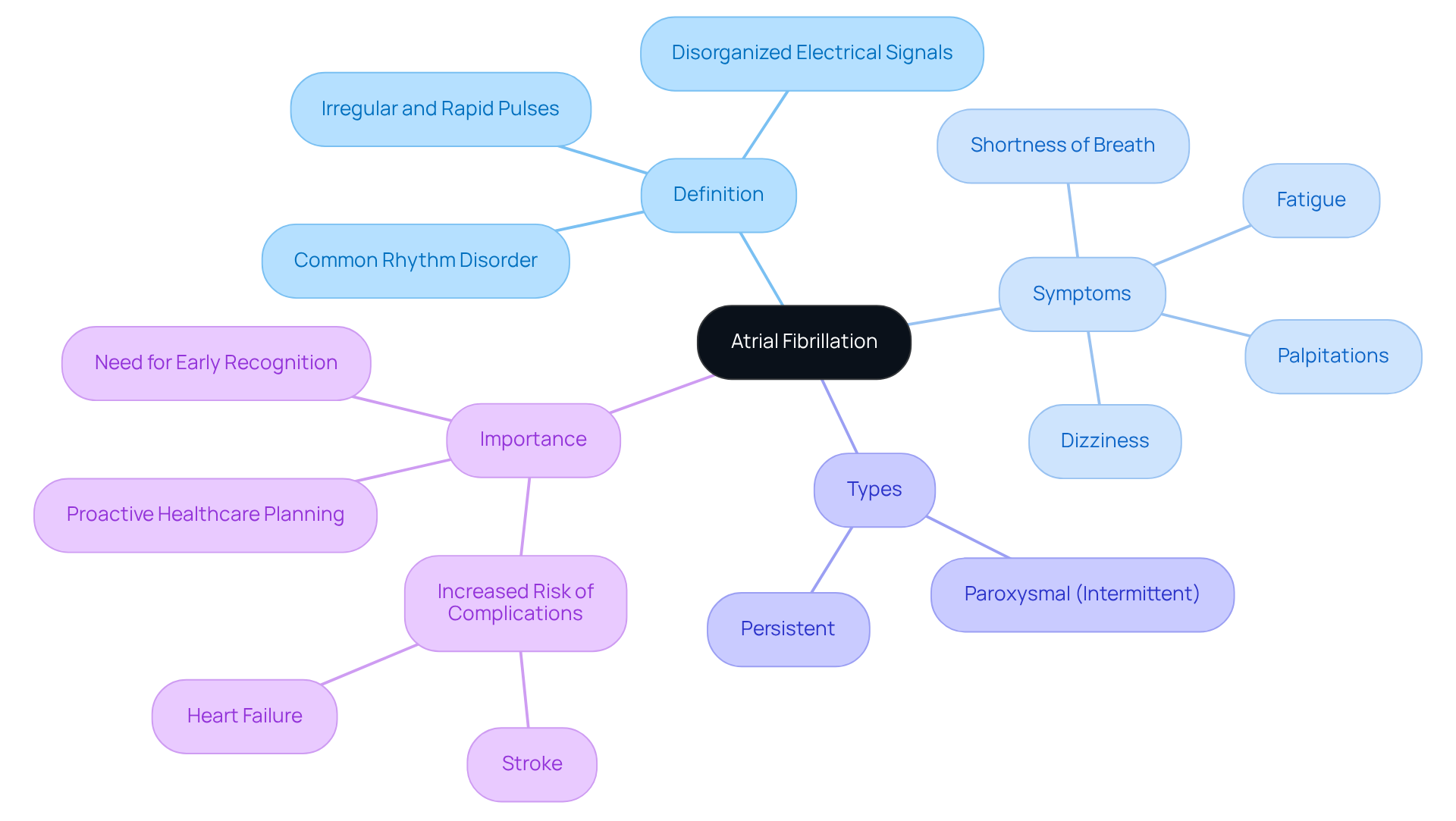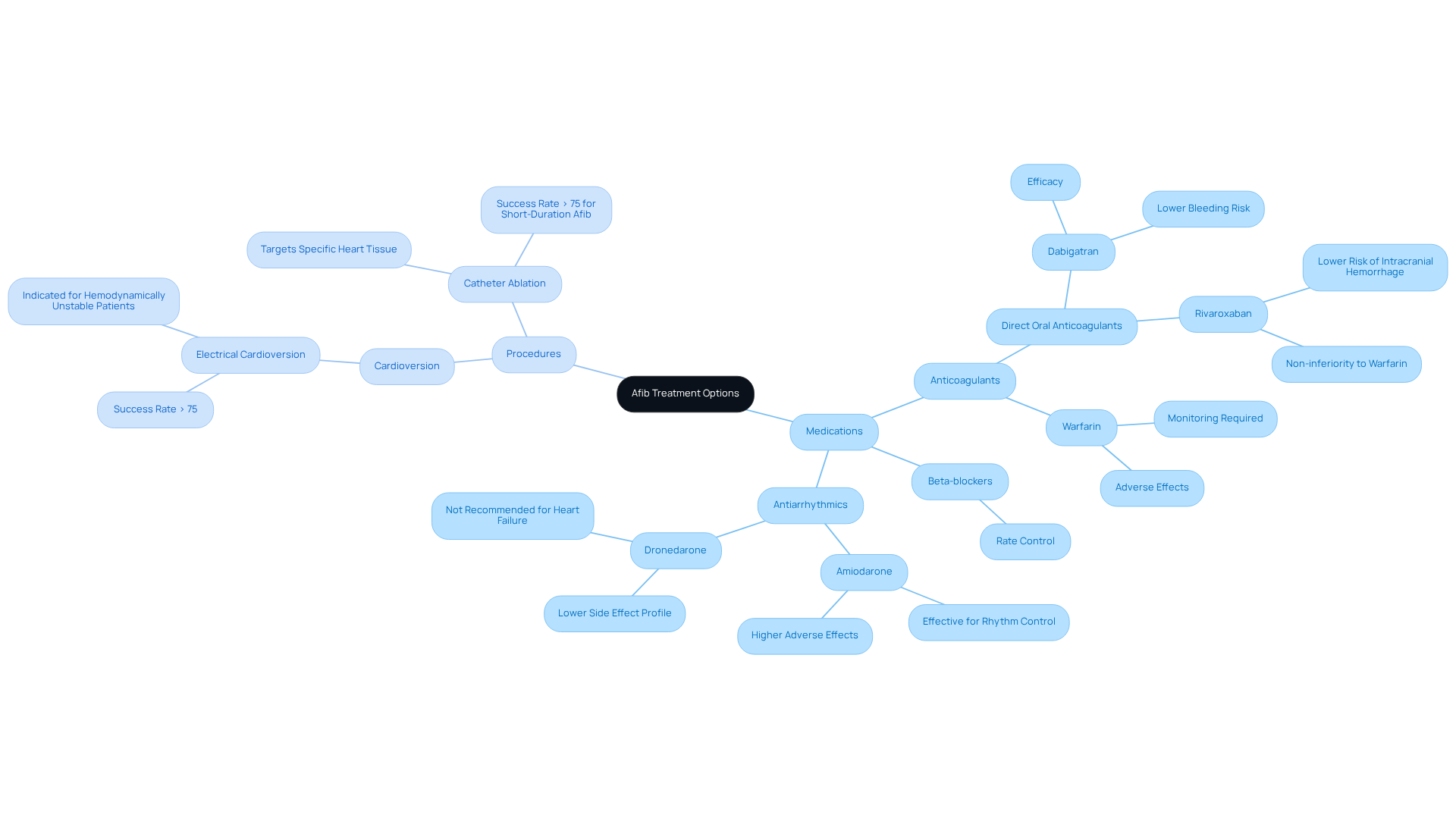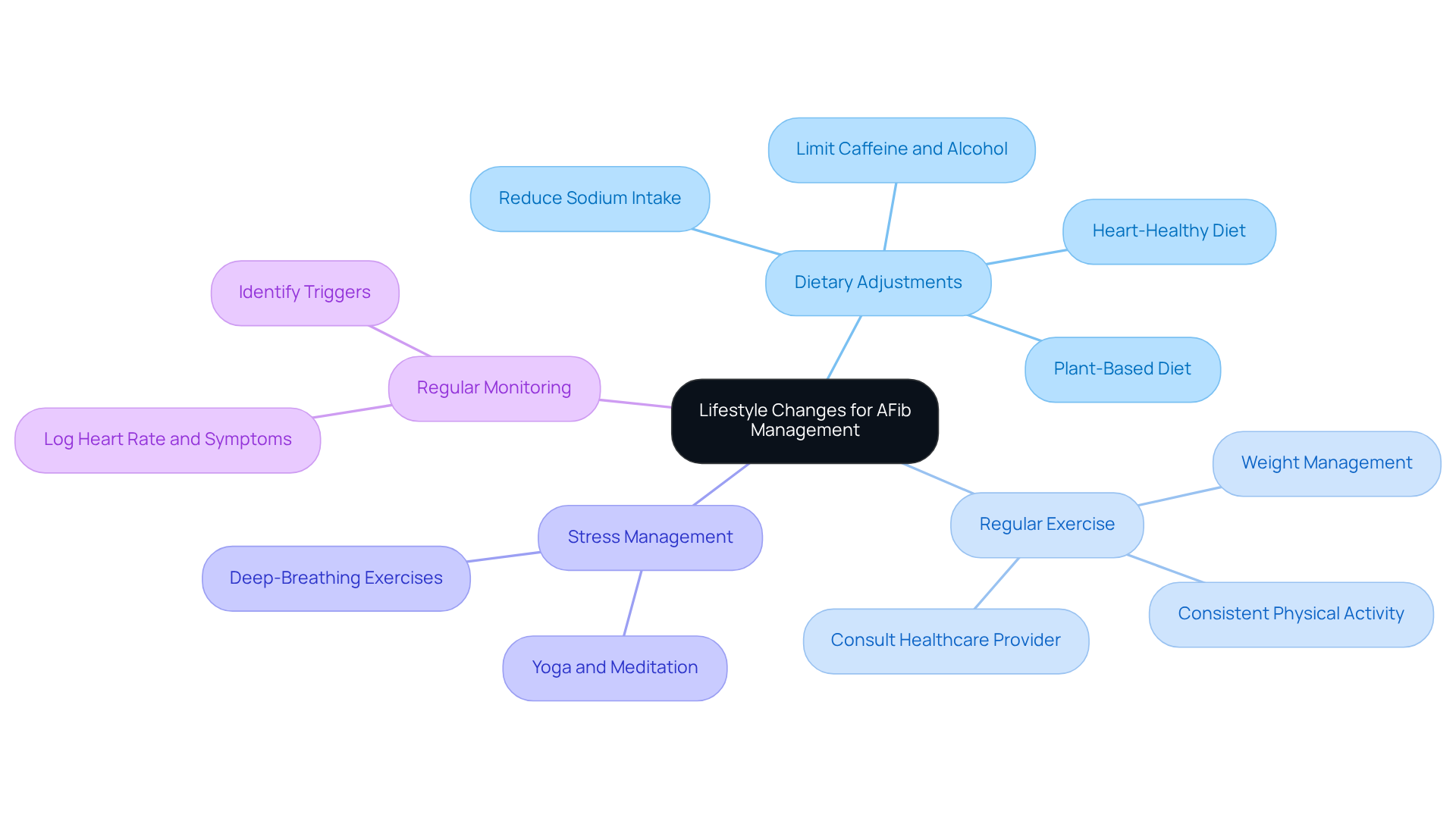


This article aims to help you understand atrial fibrillation (Afib) and highlights the vital role of both medical treatments and lifestyle changes in effectively managing this condition.
Have you ever felt overwhelmed by your health? You're not alone. Many individuals with Afib share similar concerns.
We explore various treatment options, including:
to provide you with a comprehensive view of what is available. Additionally, we discuss lifestyle recommendations such as:
These changes can significantly enhance your health outcomes and improve your quality of life. Remember, you are not in this alone; support is available, and taking these steps can lead to a healthier, more fulfilling life.
Atrial fibrillation (Afib) is more than just an irregular heartbeat; it’s a complex condition that affects millions and can lead to serious health complications if left unmanaged. As the prevalence of Afib continues to rise, particularly among older adults, understanding its symptoms, treatment options, and lifestyle implications becomes increasingly vital.
How can individuals navigate the challenges of this condition while optimizing their health outcomes? This article delves into the essential aspects of Afib management, offering insights into effective treatments and lifestyle modifications that empower patients to take control of their heart health.
In addition to this, it’s important to recognize that many individuals may feel anxious or uncertain about their condition. By exploring the various aspects of Afib, we can shed light on the ways to manage it effectively. Furthermore, we will discuss how making informed lifestyle choices can significantly improve one’s quality of life.
Ultimately, our goal is to provide you with the knowledge and support you need to face Afib with confidence. Together, we can navigate this journey towards better heart health.
Atrial fibrillation is a common rhythm disorder that can be concerning, characterized by irregular and often rapid pulses. This condition arises when the heart's electrical signals become disorganized, leading to . You may experience symptoms such as:
For older adults, understanding atrial fibrillation is crucial, as there is an increased risk of serious complications, including stroke and heart failure. Recognizing these symptoms early can facilitate timely medical intervention, which is vital for effective management.
Atrial fibrillation can present in two forms:
Each type affects treatment approaches and the necessary lifestyle changes. Recent studies indicate that more than 12 million individuals in the U.S. will be impacted by atrial fibrillation by 2030. This statistic highlights the importance of awareness and proactive healthcare planning.
Cardiologists emphasize that identifying atrial fibrillation early can significantly enhance health outcomes. It's essential for patients and caregivers to remain vigilant and attentive to possible symptoms. Remember, you are not alone in this journey; support is available, and reaching out for help can make a difference in your health and well-being.

Managing atrial fibrillation (Afib) at Amavita Heart and Vascular Health® involves a compassionate and comprehensive approach. We combine with medicine for afib to help regulate your pulse and rhythm while minimizing the risk of blood clots. Important medications include anticoagulants that significantly lower stroke risk and medicine for afib, such as beta-blockers, which assist in regulating your pulse rate. Additionally, medicine for afib includes antiarrhythmics that are used to restore a normal cardiac rhythm. Recent advancements, such as direct oral anticoagulants, have shown superior efficacy compared to traditional options like warfarin, particularly for older individuals who may find regular monitoring challenging.
At Amavita, we prioritize your convenience and personalize our patient-centered approaches. Procedures such as cardioversion, which resets the heart's rhythm, and catheter ablation, which targets specific heart tissue responsible for atrial fibrillation, are essential components of our treatment strategy. Catheter ablation has demonstrated remarkable success rates, exceeding 75% in individuals with shorter-duration atrial fibrillation and normal-sized left atria. Many older individuals experience significant benefits from this procedure, often enjoying improved quality of life and reduced symptoms.
It’s important to understand that ongoing anticoagulation therapy is often necessary even after procedures like cardioversion or ablation to prevent thrombus formation. Expert opinions highlight the effectiveness of medicine for afib, including anticoagulants and beta-blockers, in managing the condition, particularly for older adults. The ACC/AHA/HRS guidelines advocate for tailored treatment plans that consider your overall health, comorbidities, and specific symptoms. Engaging in a thorough discussion with your healthcare provider about the potential benefits and risks of each treatment option is crucial for determining the most suitable course of action. At Amavita, our CardioElite™ program enhances cardiac care by offering comprehensive management strategies aimed at reducing readmissions and improving patient outcomes. We are here to support you every step of the way.

Making lifestyle adjustments can significantly improve the management of atrial fibrillation, offering hope and support for those affected. Here are some key recommendations to consider:
By incorporating these lifestyle modifications, patients can actively manage their atrial fibrillation, leading to enhanced health outcomes and a higher quality of life. Real-world examples show that individuals who adopt these strategies often report fewer AFib episodes and improved overall well-being. Remember, you are not alone on this journey—support is always available, and small changes can lead to significant improvements.

Atrial fibrillation (Afib) is a common heart rhythm disorder that requires a compassionate understanding for effective management. Recognizing its symptoms and the potential complications associated with this condition is crucial for timely intervention. With the projected increase in Afib cases, especially among older adults, awareness and proactive healthcare strategies become even more vital in ensuring better health outcomes.
This article highlights various treatment options, including medications such as anticoagulants and beta-blockers, along with innovative procedures like cardioversion and catheter ablation. Each treatment plan should be tailored to individual needs, taking into account overall health and specific symptoms. Furthermore, lifestyle changes play a significant role in managing Afib effectively. Adopting a heart-healthy diet, engaging in regular physical activity, managing stress, and monitoring health can greatly enhance the quality of life for those affected by this condition.
Ultimately, understanding and addressing atrial fibrillation is a vital step toward improving cardiovascular health. Individuals are encouraged to take charge of their health by integrating these lifestyle modifications and remaining proactive in their treatment journey. By doing so, they can manage their symptoms more effectively and reduce the risk of serious complications, fostering a healthier and more fulfilling life.
What is atrial fibrillation?
Atrial fibrillation is a common rhythm disorder characterized by irregular and often rapid heartbeats due to disorganized electrical signals in the heart, leading to inefficient blood pumping.
What are the symptoms of atrial fibrillation?
Symptoms of atrial fibrillation may include palpitations, shortness of breath, fatigue, and dizziness.
Why is it important for older adults to understand atrial fibrillation?
Understanding atrial fibrillation is crucial for older adults because they have an increased risk of serious complications such as stroke and heart failure.
What are the two forms of atrial fibrillation?
The two forms of atrial fibrillation are paroxysmal (intermittent) and persistent, each affecting treatment approaches and necessary lifestyle changes.
What does recent research indicate about the prevalence of atrial fibrillation in the U.S.?
Recent studies indicate that more than 12 million individuals in the U.S. will be impacted by atrial fibrillation by 2030, highlighting the importance of awareness and proactive healthcare planning.
How can early identification of atrial fibrillation impact health outcomes?
Identifying atrial fibrillation early can significantly enhance health outcomes, making it essential for patients and caregivers to be vigilant about possible symptoms.
What should individuals do if they experience symptoms of atrial fibrillation?
Individuals experiencing symptoms of atrial fibrillation should seek timely medical intervention, as it is vital for effective management of the condition.